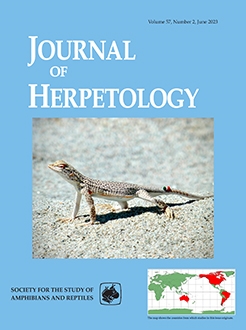The effects of timber harvest on amphibians can be complex and persist for years postharvest, but overall they are poorly understood. We examined how timber harvest has impacted two pool-breeding species, Spotted Salamander (Ambystoma maculatum) and Wood Frog (Lithobates sylvaticus), across the Canaan Valley National Wildlife Refuge, West Virginia, USA. We surveyed Spotted Salamanders and Wood Frogs at 49 pools from 2004 to 2016. Pools in recently harvested tracts tended to be smaller and less likely to hold water than pools in unharvested tracts for the duration of the breeding period. For both species, mean egg mass abundance was lower in harvested tracts than in the unharvested tracts, and over time declined substantially for Wood Frogs. Similarly, occupancy rates were lower in harvested sites for the duration of the study for both species. Occupancy rates declined over time for both species across all sites; this decline was steeper for Wood Frogs in harvested sites. Our results show the importance of long-term landscape-level studies when evaluating the effects of habitat disturbance. Understanding how forest loss and degradation impact pool-breeding amphibians will help to develop better management targets and mitigate compounding factors of decline to promote survival of these species.
How to translate text using browser tools
14 June 2023
Long-Term Effects of Timber Harvest on Ephemeral Pools and Occupancy of Spotted Salamanders (Ambystoma maculatum) and Wood Frogs (Lithobates sylvaticus)
Amber N. M. Wiewel,
Adrianne B. Brand,
Evan H. Campbell Grant
ACCESS THE FULL ARTICLE

Journal of Herpetology
Vol. 57 • No. 2
June 2023
Vol. 57 • No. 2
June 2023




